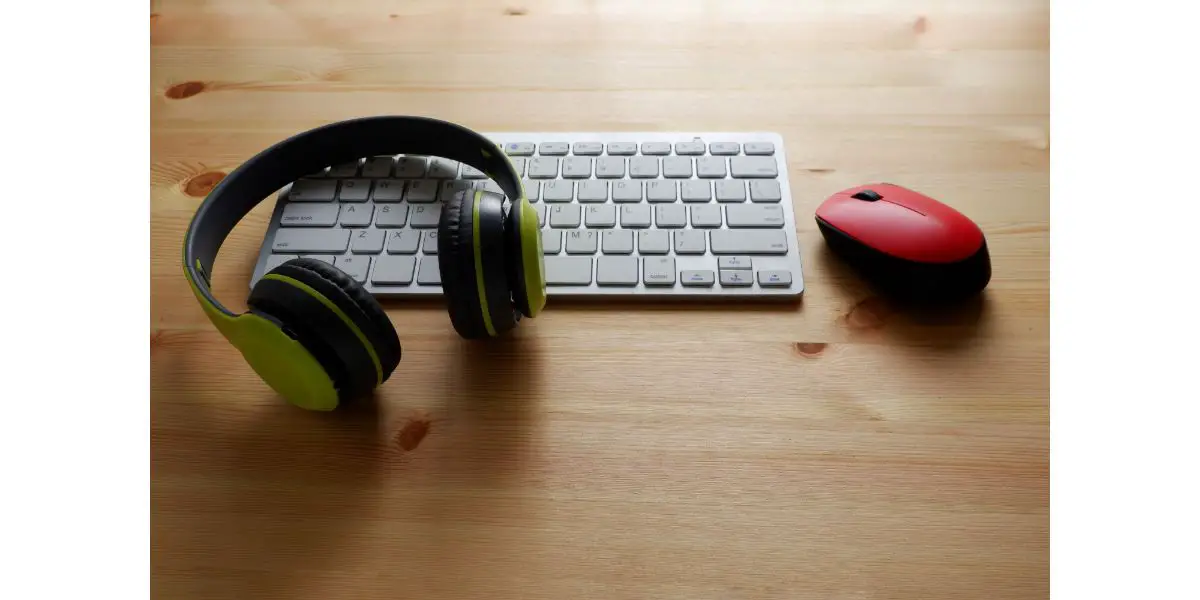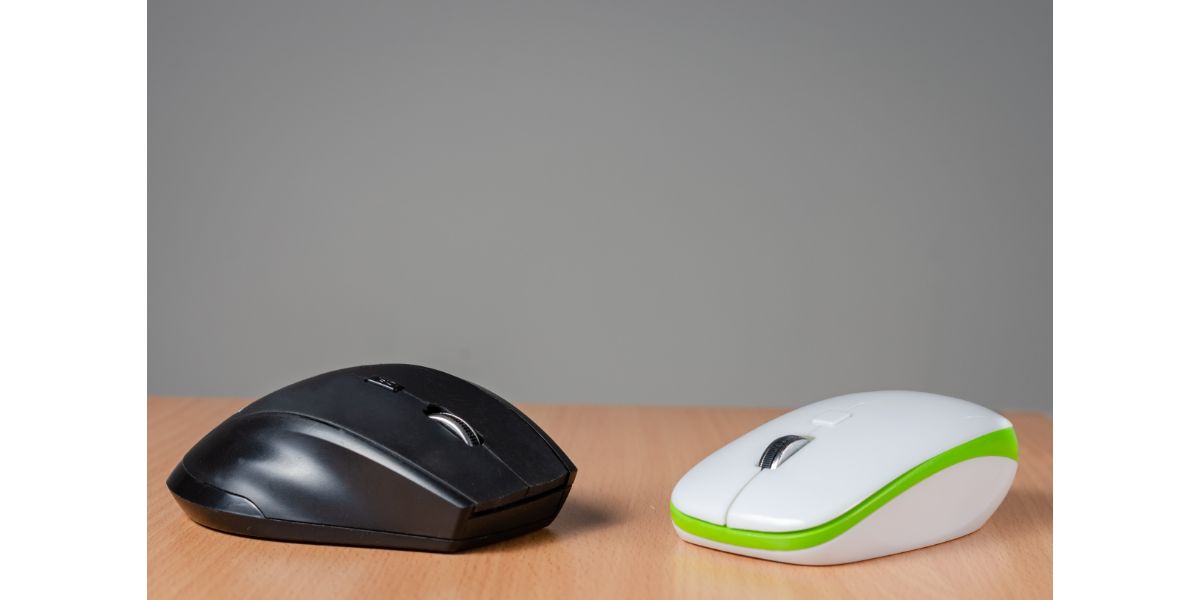Disclaimer: This post may contain affiliate links, meaning we get a small commission if you make a purchase through our links, at no cost to you. For more information, please visit our Disclaimer Page.
Most people usually think of wireless audio devices and a slower form of data transfer when they talk about Bluetooth. Yet, the wireless standard is one of the driving forces of innovation in consumer technology in this century. But do Bluetooth devices have MAC addresses?
Table of Contents
The Purpose of MAC Addresses in Bluetooth Devices
For the uninitiated, it’s easy to confuse MAC addresses with Mac devices from Apple. However, they mean very different things and refer to two very different technologies. And while Apple’s Mac devices are one of the most popular computers on the planet, MAC addresses are simply identifiers.
Let’s briefly explore what MAC addresses are before proceeding to their purpose in Bluetooth devices.
In a nutshell, MAC addresses (or Media Access Control addresses) are unique identifying numbers assigned to network interfaces and devices.
They serve the same purpose as house numbers and street names but apply to different network technologies in the IEEE 802 standard — including Wi-Fi and Bluetooth.
MAC addresses also consist of 48-bit values, typically 12 hexadecimal digits, separated by hyphens, colons, or dots. For most devices, the first 24 bits in a MAC address identify the equipment manufacturer, and the remaining digits give more information about the device itself.
Bluetooth devices have MAC addresses, a 48-bit value unique to every Bluetooth-enabled device on the planet. These addresses are also sometimes called Bluetooth MAC addresses or Bluetooth addresses, and they’re crucial for every device operating using the standard.
Bluetooth MAC addresses are technically MAC addresses and serve the same purpose as in every other network device. They allow for device identification and differentiation, core protocols that allow Bluetooth networks to function.
These MAC addresses are why Bluetooth devices can establish connections with each other and transfer data as well as audio signals.
They’re also used in Bluetooth networks to determine device availability and initiate pairing.
Still, Bluetooth MAC addresses differ from MAC addresses of other networking technologies in one aspect: they don’t provide security or privacy standards.
Instead, Bluetooth connections rely on encryption and authentication protocols for security and privacy.
What’s the Difference Between MAC And Bluetooth MAC Addresses?
The previous section of this article explored what MAC addresses are and the purpose they serve in Bluetooth devices. However, is there any difference between MAC and Bluetooth addresses?
MAC addresses are numerical identifiers used for different networking technologies, including Bluetooth. However, Bluetooth MAC addresses are specific identifiers that apply only to Bluetooth and Bluetooth-enabled devices.
In addition to that, there’s also the difference in security. MAC addresses offer safety and privacy standards to their network devices, and Bluetooth MAC addresses don’t.
Another distinction is the difference in who assigns the numerical identifiers to these network devices. Manufacturers typically issue MAC addresses to their devices, but Bluetooth MAC addresses are assigned by the Bluetooth Special Interest Group (SIG).
Still, they both follow the same standards and have the same notations. After all, a Bluetooth MAC address is only a specific type of MAC address.
You can learn more about MAC addresses by checking out this detailed explanation of what MAC addresses are and how they work.
How Do I Find the MAC Address of a Bluetooth Device?
We’ve established that Bluetooth MAC addresses are unique identifiers crucial to all Bluetooth devices’ operation. These numbers are typically useful to networking enthusiasts, but regular users might also need them.
So, how exactly do you find your Bluetooth device’s MAC address?
You can find the MAC address of a Bluetooth device by following these steps:
- Open the device settings menu. Simply click “Settings” if you use an Android or iOS-powered device. However, you can find the settings menu on MacOS computers by clicking “System Preferences.”
- Select the Bluetooth menu option. It’s under “General” on iOS devices and “About” or “About Phone” on Android devices. On MacOS, select the “Bluetooth” option and click “Advanced.”
Depending on your device, you should find the Bluetooth MAC address listed under “Bluetooth Address” or “Bluetooth,” depending on your device.
Note that the steps for finding the Bluetooth MAC address vary across devices running the same OS, especially Android-powered devices. Therefore, locating the Bluetooth address on these devices might be slightly tricky.
If you find yourself in this situation, you can use the search bar in the settings menu to quickly find the required address.
The Bluetooth MAC address is usually in the format XX:XX:XX:XX:XX:XX on most devices.
How Do I Find the Bluetooth MAC Address of a Windows Device?
Finding the Bluetooth MAC address on Windows OS devices is slightly different. And the steps I highlighted above might not work if you’re using a Windows PC or smartphone.
Here’s how to find the Bluetooth MAC address of a Windows device:
- Click on the Windows Start button or the Windows icon in the taskbar.
- To launch the Command Prompt tool, type “cmd” into the search box.
- Right-click on the “Command Prompt” icon or name and select “Run as administrator” from the options.
- Type “getmac” in the Command Prompt and press Enter.
The Command Line tool will display a list of the available network adapters connected to your device. You can browse the list until you find the “Bluetooth Network Connection” section.
You’ll find the Bluetooth MAC address as the “Physical Address.”
Can Two Devices Have the Same Bluetooth Mac Address?
Bluetooth MAC addresses — as well as MAC addresses — share many characteristics with house addresses. But with the sheer number of Bluetooth-enabled devices on the market, it’s common to wonder if two devices can have the same Bluetooth MAC address.
Two devices can’t have the same Bluetooth MAC address. These addresses serve as unique device identifiers, and the Bluetooth Special Interest Group (SIG) ensures that every value is unique and globally identifiable.
Unique addresses ensure reliable connections and efficient communication between Bluetooth-enabled devices.
Do Bluetooth MAC Addresses Change?
Like MAC addresses, Bluetooth MAC addresses are considered permanent and unique identifiers for Bluetooth devices. Therefore, they’re intended to last just as long as the device stays in operation. However, can these addresses change at some point?
Bluetooth MAC addresses can change, usually as a security and privacy measure or after a device firmware update. Your device’s Bluetooth MAC address might change if you perform a factory reset.
While privacy and security aren’t part of a Bluetooth MAC address’s functions, the connection standard has several ways to keep connections secure. One of these is by regularly changing its Bluetooth address.
However, this feature is exclusive to devices equipped with Bluetooth Low Energy (Bluetooth LE).
Still, it’s also pretty standard for some operating systems to change the Bluetooth MAC address of a device after it’s been reconnected to a network.
Are Bluetooth and Wi-Fi MAC Addresses the Same?
MAC addresses are present in every network device, even Wi-Fi devices. These addresses identify the network device manufacturer and type and relevant information concerning the device. But are Bluetooth and Wi-Fi addresses the same?
Bluetooth and Wi-Fi MAC addresses aren’t the same, even though they might look similar on some devices. The identifying values for all network devices are unique, have different formats, and will differ even if multiple network devices are present in a single device.
Bluetooth MAC addresses are 48 bits long, while Wi-Fi MAC addresses are typically 60 bits long.
The Bottom Line
Bluetooth devices have MAC addresses that are unique and serve as identifiers. They’re also crucial to the way Bluetooth-enabled devices connect and interact.


